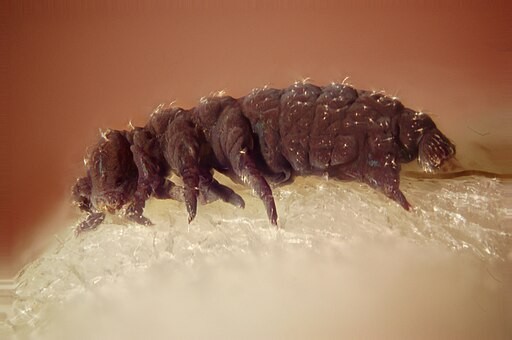Experts studying the mysterious organism called tardigrades may have found the creature's potential to slow human aging.

(Photo : Wikimedia Commons/ Darron Birgenheier from Reno, NV, USA)
Unusual Characteristics of Tardigrades
Tardigrades refer to a diverse group of microscopic invertebrates first discovered in 1773. These eight-legged segmented micro-animals are one of the most indestructible life forms on Earth because of their ability to survive extreme environmental conditions.
Also known as moss piglets or water bears, these organisms have the ability to live for up to 60 years and grow to a maximum length of 0.5 millimeters. Tardigrades can also survive for up to 30 years without food or water.
These mysterious animals can survive being completely dried out. They can live for up to a few minutes when exposed to temperatures as low as -457 degrees Fahrenheit (-272 degrees Celsius) or as high as 302 degrees Fahrenheit (150 degrees Celsius).
Unlike other organisms, water bears can withstand pressures ranging from 0 atm in space up to 1,200 atm at the bottom of the Marianas Trench. They can also resist radiation levels up to 5,000 - 6,200 Gy, several thousand times more than what a human can withstand.
Moss piglets are able to withstand such extreme conditions by entering a state of suspended animation called biostasis. In this process, they use proteins that form gels inside of cells and slow down biological processes.
READ ALSO: Tardigrades 101: What Makes Water Bears Extremely Resilient in Space?
Harnessing the Potential of Tardigrade Proteins
The ability of tardigrades to survive being completely dried out has puzzled experts. This is due to the fact that these organisms do so in a manner that is different from a number of other organisms with the ability to enter suspended animation.
This characteristic makes tardigrade proteins potential candidates in studies centered on slowing the aging process of human cells. To establish this connection, researchers from University of Wyoming examine the mechanism used by the micro-animal to enter and exit from suspended animation.
Led by Silvia Sanchez-Martinez from the Department of Molecular Biology, the research team conducted a small cell experiment focusing on a tardigrade protein called CAHS D. The details of their study is described in the paper "Labile assembly of a tardigrade protein induces biostasis".
Biostasis refers to a state of suspended animation where organisms can tolerate unfavorable changes in the environment. Sanchez-Martinez and her team demonstrated that the proteins that make biostasis possible in these tiny critters can have a similar effect on human cells.
After introducing the proteins into human cells, they transform into a gel-like consistency and slow down metabolism, just like in tardigrades. It is like conferring the abilities of the tardigrades to the human cells by making them more resistant to stresses.
Aside from this, the team also discovered that the entire process is reversible, which means that the metabolism of the cell can reset back to normal after slowing down. When the stress is relieved, the tardigrade gels dissolve, and the human cells go back to their normal metabolism.
The researchers believe that their findings can be harnessed to develop lifesaving treatments available to people in places where refrigeration is unavailable. They can also use them in improving the storage of cell-based therapies.
RELATED ARTICLE: Tardigrade Proteins Could Lead to Medical Breakthrough, Preserving Drugs Without Refrigeration?
Check out more news and information on Tardigrade in Science Times.

![Humans Will Go Extinct on Earth in 250 Million Years; Mass Extinction Will Occur Sooner if Burning Fossil Fuels Continues [Study]](https://1721181113.rsc.cdn77.org/data/thumbs/full/53373/89/56/50/40/humans-will-go-extinct-on-earth-in-250-million-years-mass-extinction-will-occur-sooner-if-burning-fossil-fuels-continues-study.jpeg)












